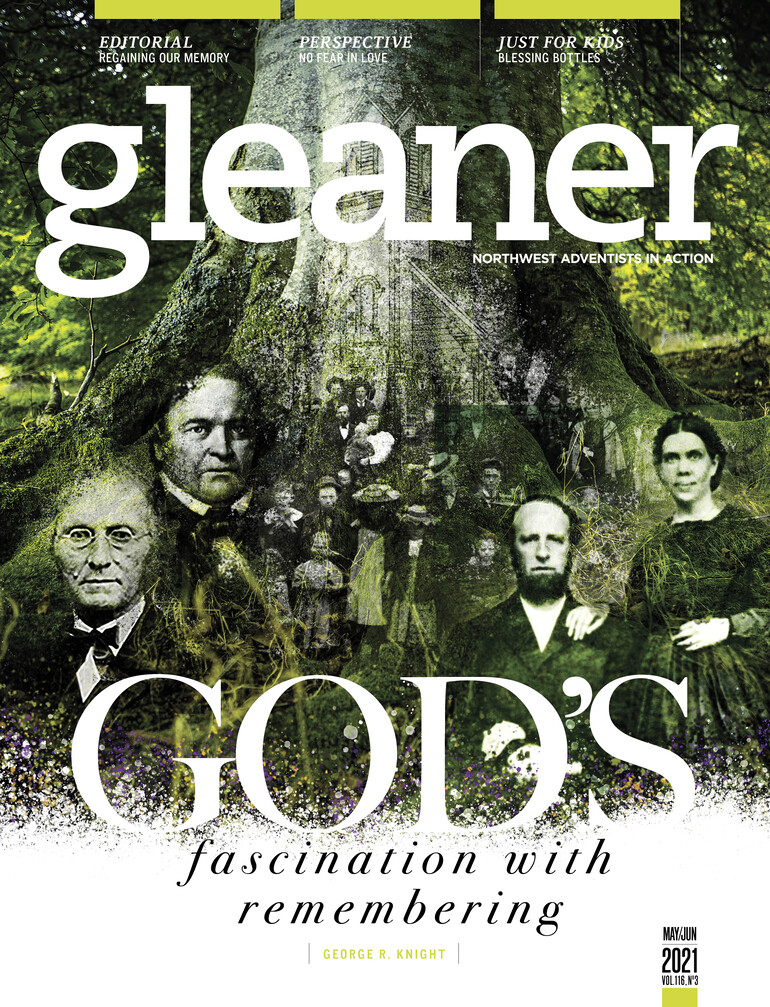God has a genuine interest in the history of His people. And He desires His followers to have that same concern. It is no accident the first word in the fourth commandment is “remember.” God wanted His people never to forget He was their Creator. So He gave them a weekly reminder (Exod. 20:8–11).
But God was not only Creator. He was also Redeemer. So He provided daily and yearly reminders of the importance of the blood of the lamb “that makes atonement” (Lev. 17:11). Regarding the blood of the Passover lamb, for example, during the annual celebration of the feast children were to ask, “What do you mean by this service?” And the elders were to recount the saving effect of the blood of the lamb (Exod. 12:26, 27). The Old Testament is filled with illustrations of God’s interest in His people remembering their history.
That fascination with the remembrance of history flows right into the New Testament. Perhaps the most important is the periodic commemoration of the Last Supper. Paul wrote that “as often as you eat this bread and drink the cup, you proclaim the Lord’s death until He comes” (1 Cor. 11:26). Interestingly enough, that statement highlights the fact that remembering often has two edges. In the communion event, one points backward to the death of Jesus while the other points forward to the Second Advent.
Remembering God’s leading in the past is important for our future. Just think, for example, how different the history of Israel would have been if the Jewish people had focused less on Messiah as a conquering king and more on the daily temple lesson and the annual Passover illustration related to the blood of the lamb. God, through John the Baptist, tried to redirect their minds when He inspired the prophet to proclaim Jesus as “the Lamb of God, who takes away the sin of the world” (John 1:29). But the Jews, having forgotten the central symbolic lesson in their history (the blood of the lamb), found the death of Christ to be a “stumbling block” (1 Cor. 1:23).
Their neglect of another historical lesson was no less consequential. Namely, that the covenant through Abraham was to lead Israel to become a blessing to “all” nations. In spite of the fact that Isaiah and others sought to drive that lesson home, by the time of Christ Israel had come to see their Lord as the God of the Jews, while the gentiles were seen as unclean. That misreading of history led to a tragedy that could have been avoided.
God’s emphasis on His people remembering their history hasn’t changed. Nor has its importance. One only has to think of the oft-quoted statement in Life Sketches that “in reviewing our past history, having traveled over every step of advance to our present standing, I can say, Praise God! As I see what the Lord has wrought, I am filled with astonishment, and with confidence in Christ as leader. We have nothing to fear for the future, except as we shall forget the way the Lord has led us, and His teaching in our past history” (p. 196). In short, knowing and recalling Adventist history is important as His Advent people continue to journey toward the “blessed hope” (Titus 2:13).
And central to Adventist history are the messages of the three angels of Rev. 4:6–12: a series of prophetic events that began in the 1830s with William Miller preaching the return of Christ and climaxes with the proclamation of the third angel, which set the stage for the purpose and mission of that group of ex-Millerites who formally became Seventh-day Adventists in the early 1860s. “Here is the patience of the saints,” we read in the third message, “here are they that keep the commandments of God, and the faith of Jesus” (KJV). And right after those three progressive messages we find Jesus coming in the clouds of heaven (Rev. 14:14, 15). It is no wonder that Ellen White pointed to the cry of the third angel as the last message to be given to the world before Earth’s end. Those three messages need to be at the core of Adventist remembering and understanding of God’s leading in the denomination’s history.
Adventism forgets its prophetic heritage at its peril since the messages of Revelation 14 have shaped in every way the denomination’s development and present purpose and mission. One only has to think of Rev. 14:6, which notes that God’s last day message would go “to every nation and tribe and tongue and people” to grasp why the budding denomination sent its first official foreign missionary in 1874. That was a small start, but today the Seventh-day Adventist Church is the most widespread, unified Protestant denomination in history.
In addition, the mission imperative of Revelation 14’s angels has led to the development of each aspect of the denomination’s present outreach. Thus in the late 1840s James White began a publishing work to help spread the message of Revelation’s angels. And the 1860s and 1901 witnessed the development and refinement of church organization to facilitate world mission. The 1860s also saw the initiation of Adventism’s health message and medical work since people can understand and spread the gospel more efficiently if their bodies and minds are in as healthy condition as possible. And then there was the beginning of Seventh-day Adventist education in Battle Creek in the 1870s to train individuals to take the three messages to Earth’s remotest bounds.
Remembering has been central to God’s people from Genesis until today. When religious people forget their history they lose their way. Churches who forget their past lose purpose and relevance. “We have nothing to fear” if we remember God’s leading.
*All Bible references are from the RSV unless noted otherwise.










